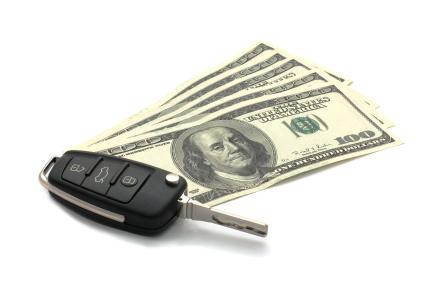 The nation’s car insurance companies consider a variety of factors in setting insurance rates. Many of these don’t involve driving at all.
The nation’s car insurance companies consider a variety of factors in setting insurance rates. Many of these don’t involve driving at all.
According to the Consumer Federation of America, the largest insurers frequently charge higher premiums to safe drivers than to those who recently caused an accident.
In its third report on auto insurance premiums charged by the largest auto insurers, the Consumer Federation of America found that these insurers frequently charge higher premiums to safe drivers than to those who recently caused an accident.
In two-thirds of the 60 cases studied, large auto insurers quoted higher premiums to safe drivers than to those responsible for an accident.
In more than three-fifths of the cases with these higher premiums, the premium quoted the safe driver exceeded the premium quoted the unsafe driver by at least 25 percent.
These higher prices for “good drivers” mainly reflect insurer use of rating factors such as education and occupation that, in a 2012 nationwide survey, over two-thirds of Americans said were unfair.
“State insurance regulators should require auto insurers to explain why they believe factors such as education and income are better predictors of losses than are at-fault accidents,” J. Robert Hunter, CFA’s director of insurance and former Texas Insurance Commissioner, said in a statement. “Policymakers should ask why auto insurers are permitted to discriminate on the basis of non-driving-related factors such as occupation or education.”
The CFA priced policies in twelve cities using the websites of the five largest auto insurers – State Farm, Allstate, GEICO, Farmers and Progressive – who together have more than half the private auto insurance market.
It compared premiums quoted to two 30-year old women who each had driven for 10 years, lived on the same street in the same middle-income zip code and sought minimum liability coverage required by that state.
These two women differed in several important respects. One was a single receptionist with a high school education who rents, has been without insurance coverage 45 days, and has never had an accident or moving violation. The other woman was a married executive with a Masters degree who owns a home, has had continuous insurance coverage and has had an at-fault accident with $800 of damage within the past three years.
“Unfortunately, the discriminatory practices of auto insurers mainly harm low- and moderate-income drivers,” Stephen Brobeck, CFA’s executive director, said in a statement. “This damage can be considerable since all states but one require drivers to carry auto insurance, and most Americans need a car to pursue work opportunities.”
There were significant differences, however, among the five major insurers. On the one hand, in every case Farmers, GEICO and Progressive quoted the safe driver a higher premium than the driver causing an accident. (In several cases, companies refused a quote to the good driver but gave one to the accident-causer.) On the other hand, in all twelve cities State Farm charged the good driver less. Moreover, in all twelve cities, the rates quoted by State Farm were either the lowest (6 cities) or the second lowest (6 cities).
“With nearly one-quarter of the private passenger auto insurance business, State Farm dominates the market. If they can be a successful company without using highly discriminatory factors, other large companies should be able to do so as well,” Hunter said.
The most recent report priced policies in middle-income ZIP codes, not moderate-income zip codes, as in the two earlier reports. Yet this report found similar pricing patterns, namely, virtually no consistency of pricing within cities or among companies.
Among the twelve cities, Allstate’s annual premiums for good drivers ranged from $850 (St. Louis) to $3,292 (Baltimore) while Progressive’s annual premiums ranged from $864 (Cleveland) to $1,928 (Baltimore).
There was also wide variation within individual cities. In Baltimore, despite the high rates quoted by Allstate and Progressive, a rate of $822 was quoted by GEICO for good drivers. And in Phoenix, the quoted Progressive rate was $1,304 while the quoted State Farm rate was only $480.
“Again, our research on auto insurance prices reveals a marketplace that is highly uncompetitive,” Brobeck said. “Any economist will tell you that when prices range 100 percent, even 200 percent, for similar products, that marketplace is not competitive. But it appears that this lack of competitive pricing mainly reflects the frequent lack of interest of major auto insurers in selling basic products to low- and moderate-income drivers.”
In 35 of the 60 cases studied, the insurers either quoted annual premiums in excess of $1,000 or refused to quote a price. In only four cases did they quote an annual premium under $500.
“A fairly high percentage of low- and moderate-income drivers cannot afford to purchase auto insurance, which is why so many risk breaking the law and getting stuck with accident bills,” Hunter said. “State regulators should ask insurers why they cannot offer more safe drivers basic minimum liability coverage for about $300, and never more than $500, annually. In California’s state-run, low-income auto insurance program for good drivers, even most participating drivers from Los Angeles are provided this coverage for under $400 annually.”
These premiums cover insurer losses with no subsidy from other drivers.












